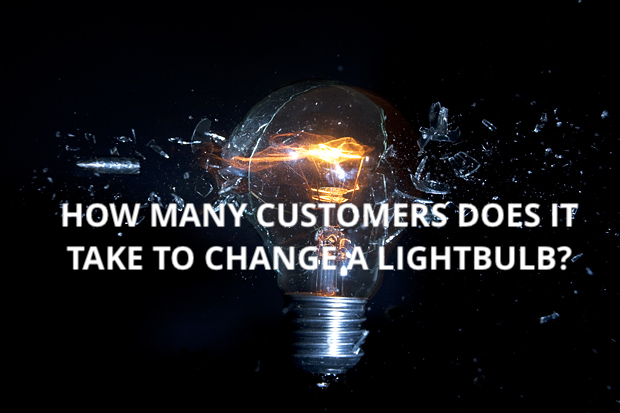 According to Gartner: as the number of buying roles increases the probability of any deal getting done diminishes. This study suggests that there is a material impact even when the buying group moves from one to two buyers and that when it grows to five or six buyers the probability of a deal happening reduces to 30 percent.
According to Gartner: as the number of buying roles increases the probability of any deal getting done diminishes. This study suggests that there is a material impact even when the buying group moves from one to two buyers and that when it grows to five or six buyers the probability of a deal happening reduces to 30 percent.
But the reality, according to Altify’s Buyer / Seller Value Index Study, is that the causal factor for the number of stakeholders involved in a buying decision is the complexity of the solution being purchased. The more complex the solution, the more people need to be involved from the buyer’s side – and the more people involved, the longer it takes to reach agreement between them. And too often – in 70 percent of cases, as cited above – agreement cannot be reached at all.
What we know for sure is that the old paradigm of top-down, single decision maker directed purchases are increasingly rare – so it is important to be able to access all the key influencers in any deal.
Correlating the ability to access the decision makers with the revenue performance of the sellers makes for interesting insights.
Based on the original Buyer / Seller Value Index research, we know that where there is not an existing relationship between the buyer and the seller, most buying organizations (72 percent) invite five or more suppliers to each bid.
We also learned that there are more than five buying decision makers involved in half of those buying decisions.
And a typical enterprise purchase is not a one-call sale. Multiple meetings (~ five) with the key influencers will be needed – perhaps as many as 125 (5 x 5 x 5) engagements between seller and the individuals in the buyer group.

That’s a lot of meetings. The overhead on the buying organization becomes extreme, so the buyer quickly whittles down the potential suppliers to a shortlist and then to the preferred vendor. Getting access to all of the decision makers early in the buying cycle is clearly important.
One of things that has discouraged sellers from engaging early with buyers has been the widely circulated and materially misinterpreted 57% statistic from CEB. The idea has taken hold in the market that all buyers are 57% through their buying process before they reach out to a supplier, and consequently the only remaining differentiator is price.
That, of course, is nonsense. The context of the research was lost in the subsequent hyperbole in the market. A buyer who is buying paper for their Xerox copier will behave differently than a buyer who is looking to purchase an ERP system to run their business. The reality of course is that some buyers are 57%+ through their buying process before they connect with a seller. Others want to engage a seller early in their buying process to learn, get advice, find a strategic business partner and do all of the things that smart buyers do. But the statistic has been misleading. CEB now agrees. In a recent blog post, Nick Toman of CEB has said as much.
Indeed, many pundits have interpreted our finding that the average customer is 57% through their purchase before engaging a supplier as an indicator of this trend [the death of sales]. But that interpretation is based on the (faulty) assumption that the customer actually “got it right” throughout their research. It assumes the customer stakeholders were in agreement on their problem — and their course of action — when they reached out to the supplier. To put it bluntly: this isn’t the norm. Nick Toman, CEB
But some sellers cite this 57% as a reason for disclaiming their responsibility to gain access to the key influencers early. They then miss the opportunity to understand the customer’s business problem or discover where they might have Unique Business Value to bring to the customer. This is misinformed, lazy, or dangerous; or all three.
The reality, of course, is that some buyers are 57%+ through their buying process before they connect with a seller. But others want to engage a seller early in their buying process to learn, get advice, find a strategic business partner and do all the things that smart buyers do. According to the Buyer / Seller Study, 56% of buyers want sellers to engage early in the buying cycle. Interestingly, we also learned that those who engaged early had a 30 percent higher Win Rate than their counterparts who waited until later in the cycle.
 As the saying goes, companies don’t buy, people buy. Failing to gain access to key influencers in a deal is definitely one of the main reasons why deals are lost. The first step is to identify who the real influencers are; and then consider things from their perspective. Sellers who are effective in doing this have a 28 percent greater Win Rate and a 21 percent shorter Sales Cycle. Combined, a 68 percent increase in sales performance is achievable.
As the saying goes, companies don’t buy, people buy. Failing to gain access to key influencers in a deal is definitely one of the main reasons why deals are lost. The first step is to identify who the real influencers are; and then consider things from their perspective. Sellers who are effective in doing this have a 28 percent greater Win Rate and a 21 percent shorter Sales Cycle. Combined, a 68 percent increase in sales performance is achievable.

It pays to engage with the right people in the buying organization – and to do so early.
 People and process: Gaining access to the right people can increase performance by 62 percent is Insight #2 from Thriving in the Whirlwind: Four Insights to Grow Revenue Now which analyzes the 80,000 data elements of the Altify Buyer / Seller Value Index Study (2016) in combination with the 60,000 data elements of the Business Performance Benchmark Study (2017) to derive fresh insights into revenue growth opportunities in a fast-changing world.
People and process: Gaining access to the right people can increase performance by 62 percent is Insight #2 from Thriving in the Whirlwind: Four Insights to Grow Revenue Now which analyzes the 80,000 data elements of the Altify Buyer / Seller Value Index Study (2016) in combination with the 60,000 data elements of the Business Performance Benchmark Study (2017) to derive fresh insights into revenue growth opportunities in a fast-changing world.
Download THRIVING IN THE WHIRLWIND by participating in the 2018 Business Performance Benchmark Study (takes 5-10 minutes)
If you want to read more of my blogs please subscribe to Think for a Living blog. Follow me on Twitter or connect on LinkedIn. I want you to agree or disagree with me, but most of all: I want you to bring passion to the conversation.
Donal Daly is Executive Chairman of Altify having founded the company in 2005. He is author of numerous books and ebooks including the latest Amazon #1 Bestseller Digital Sales Transformation in a Customer First World (Nov 3, 2017) and his previous Amazon #1 Best-sellers Account Planning in Salesforce and Tomorrow | Today: How AI Impacts How We Work, Live, and Think. Altify is Donal’s fifth global business enterprise.

